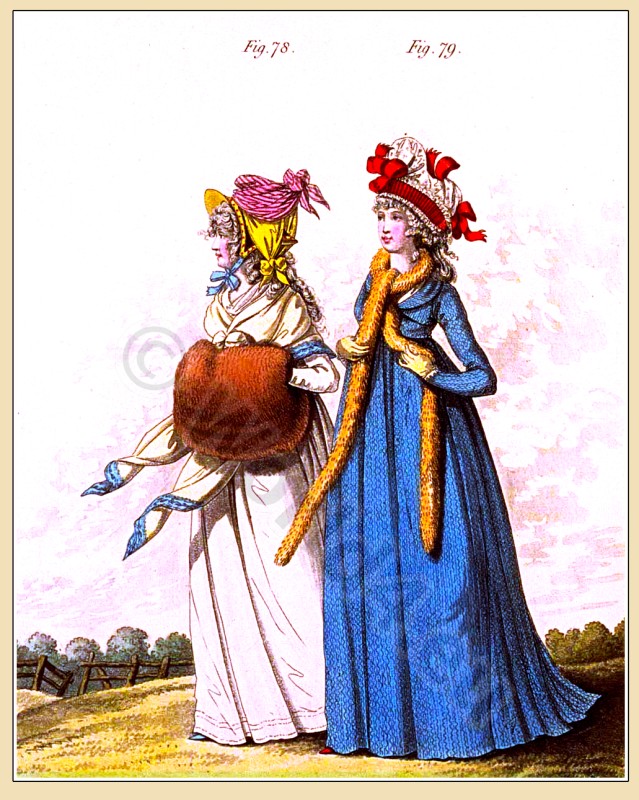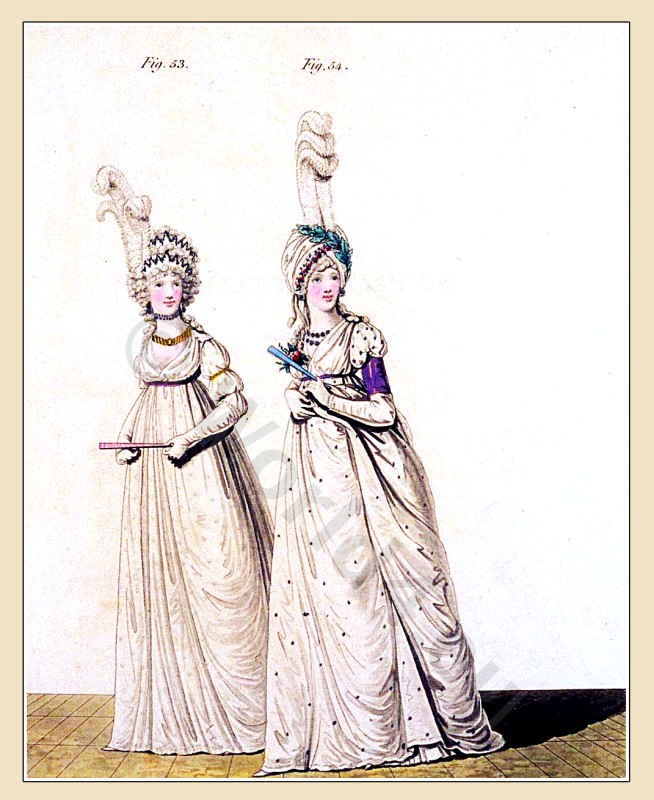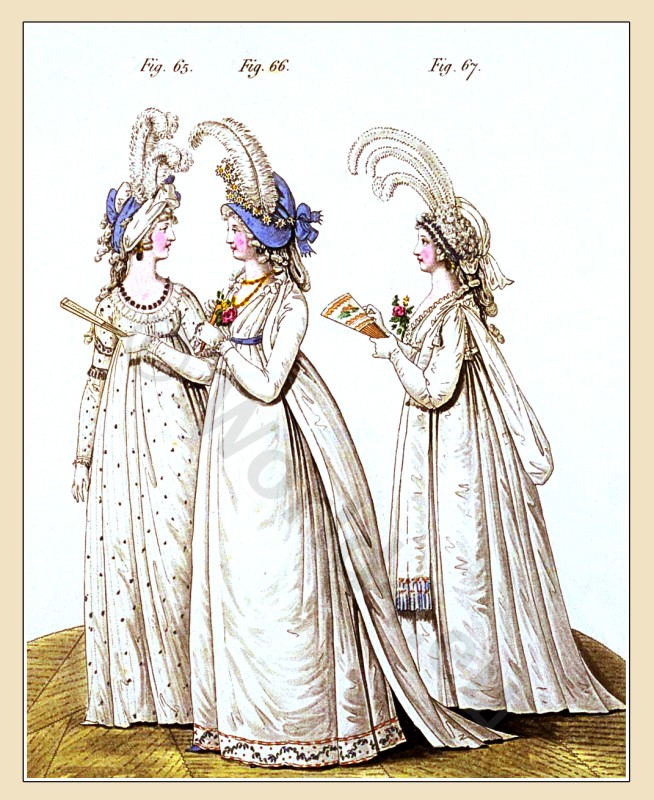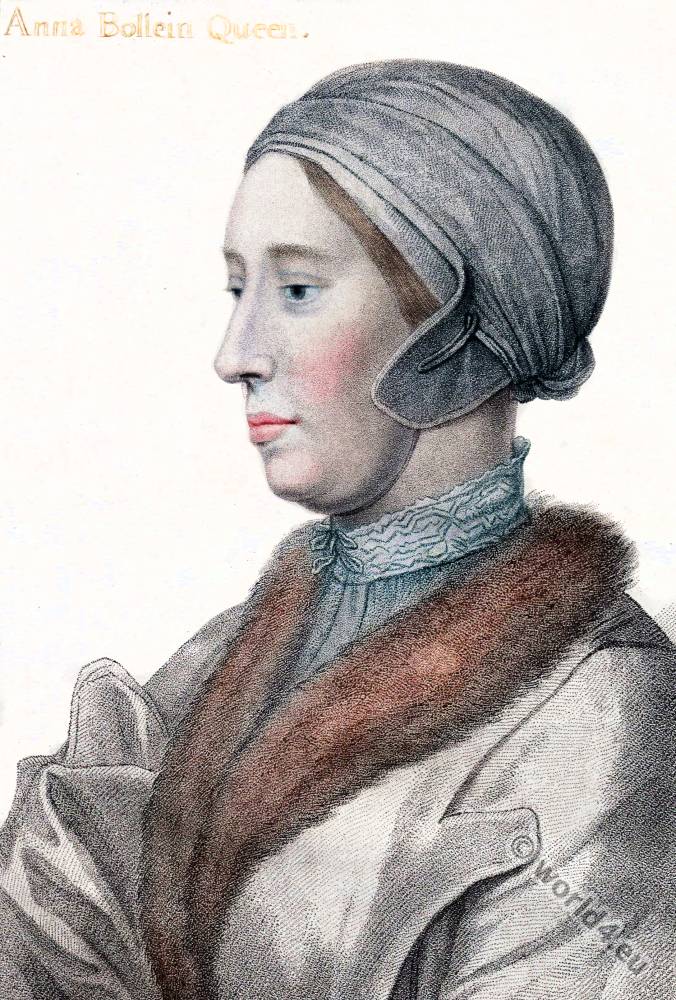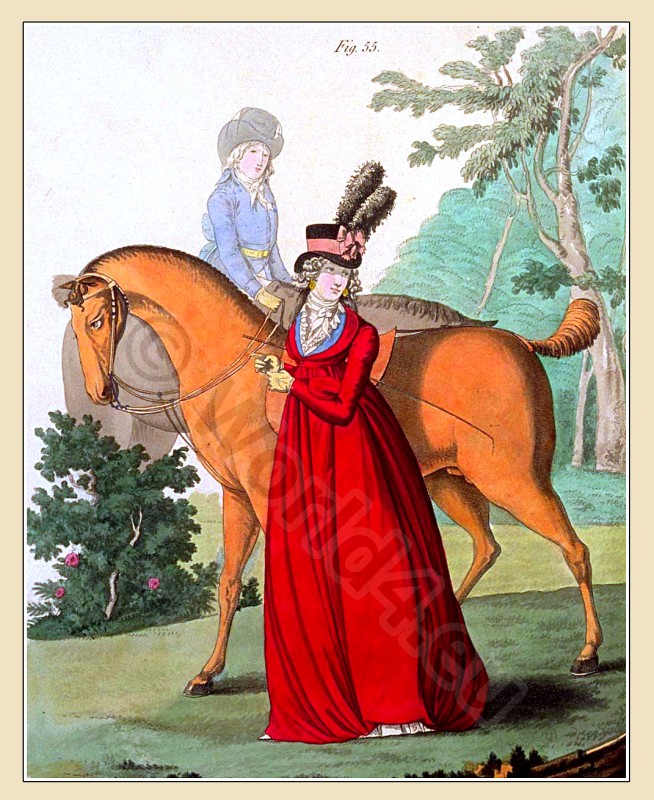Gown of fine calico. Princess Augusta’s cap.
Morning dresses. December 1795. The Gallery of Fashion Vol. 2. April 1795 To March 1796.
FIG. LXXVIll.
The hair dressed in ringlets. Stamp hat, covered with black velvet, edged with a yellow and carmelite spotted border; lined with pale yellow satin; trimmed with a plaid and a yellow silk handkerchief; and tied under the chin with a blue satin riband. Gown of fine calico, with long sleeves, and a broad hem and tuck at the bottom. Handkerchief within. the gown. India shawl. Fur muff. Blue shoes.
FIG. LXXIX.
The hair dressed in small curls and ringlets, and the hind hair turned up plain. Princess Augusta’s cap, made of embroidered book-muslin; band of carmelite coloured reverse-plaited satin riband; bordered all each side with a fine edging, and trimmed with three large bows of satin riband of the same colour. Morning gown of chintz. Handkerchief within the gown. Gold ear-rings. Fur tippet. Straw colored gloves Carmelite colored shoes.
Source: The Gallery of Fashion Vol. 2. April 1795 To March 1796. Published by Nikolaus von Heideloff, London.

